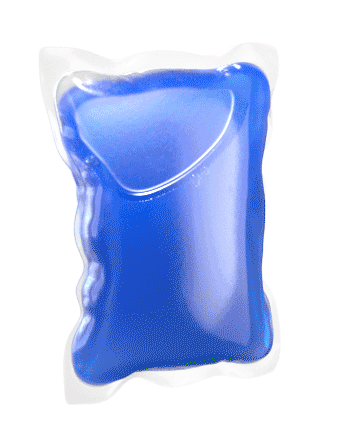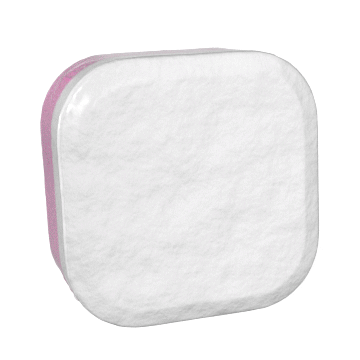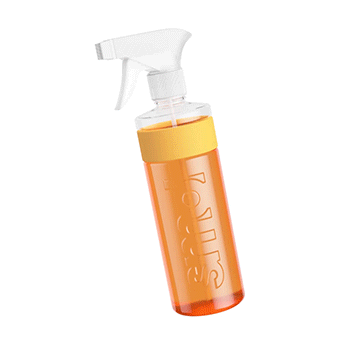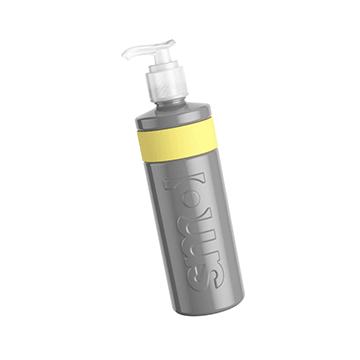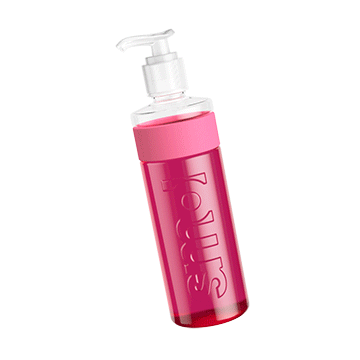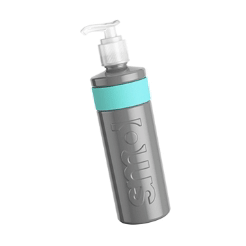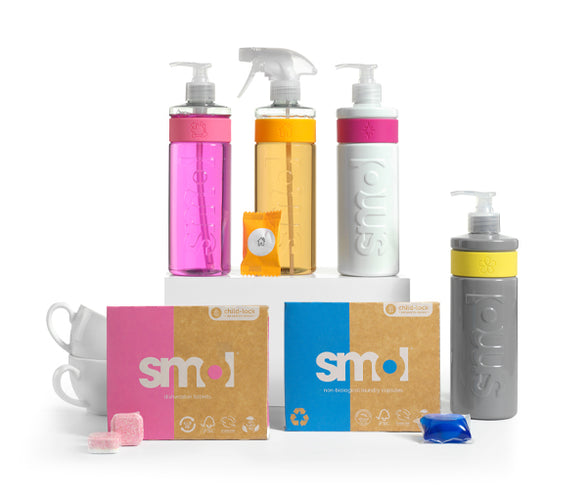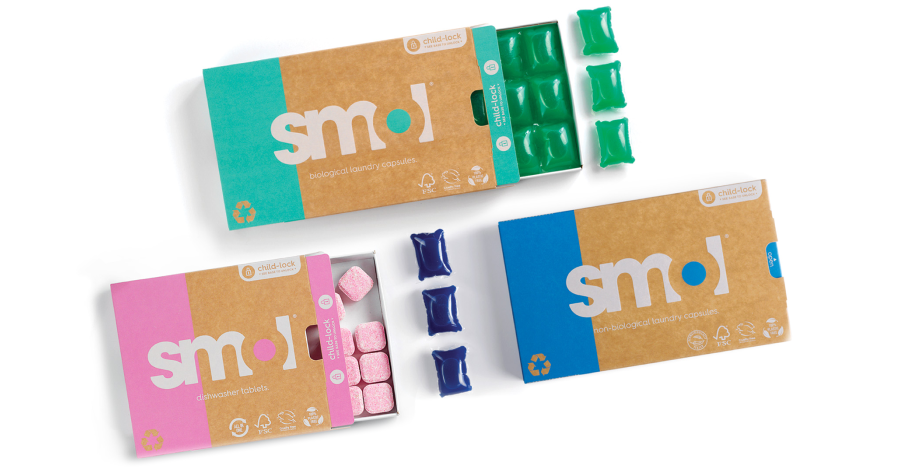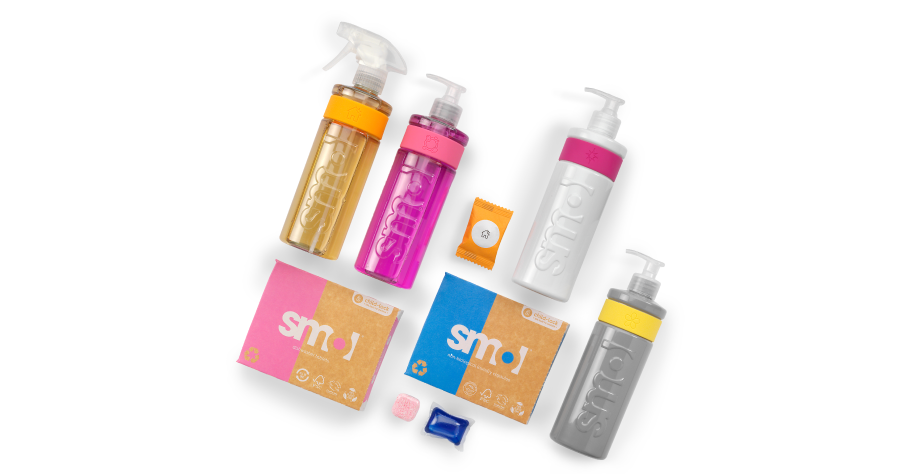
Think about the cleaning liquids in your home.
Washing up liquid, laundry detergent, fabric conditioner, floor cleaner, surface sprays, hand soaps… the list goes on (we haven’t got all day) but they ALL come in a variety of packaging.
Each type of pack creates different amounts of carbon through their production and it’s something here at smol that we like to keep up to speed with.
4 main contenders.
Liquids mostly come in 4 pack types.
types 1 & 2.
HDPE and PET plastic bottles. Most homes will have a variety of both these plastic types with all manner of cleaning products in them… liquid shampoo, bleach, fabric conditioner, laundry liquid and surface sprays.
type 3.
Stand up pouches (known in the packaging industry as Doypacks) are becoming more popular with many liquid cleaning refill brands. They are also popular in the food industry. These pouches are a mix of plastics and are lightweight plus they compact down once empty so take up a fraction of the space compared to bottles.
type 4.
Cartons contain many types of liquid but traditionally are the domain of the food sector; fruit juice, soup, milk, chopped tomatoes, custard… again the list goes on.
charting carbon.
In our smol pursuit of greater sustainability we wanted to know for sure what the difference between these 4 major types of pack were in terms of the carbon they generated whilst being produced.
So we found out.

cartons cut carbon.
Interesting to discover the production of a carton generates 43% less carbon than even a fully recycled PET plastic bottle.
This was one of the many reasons we moved our liquid products into carton refills. And you can read more about the many benefits of swapping plastic for cartons here.
Our washing up liquid and fabric conditioner are now in a carton refill system where new customers receive a starter pack with one bottle-for-life and their first refill carton. Ongoing refill packs for all customers new and old, will then come in cartons ready to decant.
By early 2024 we should have stain gel joining their ranks.
We look forward to the carbon cutting impact this will have for all our customers. It’s one more smol thing that makes a big difference.
* Climate Partner April 2022
